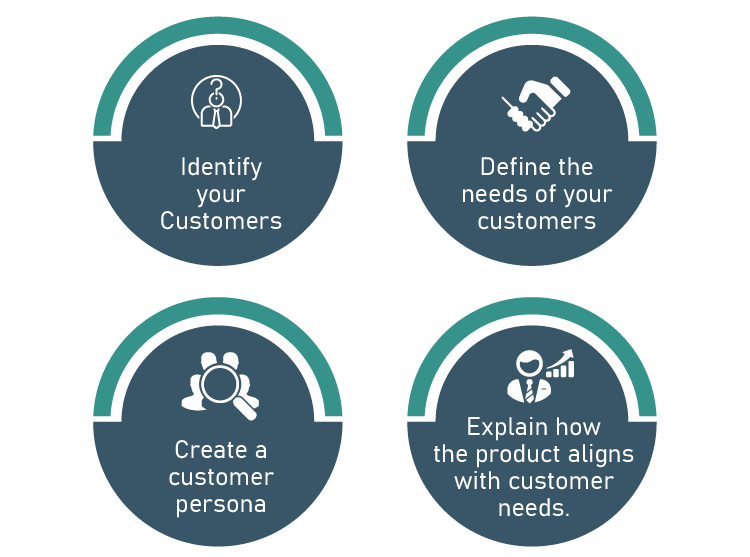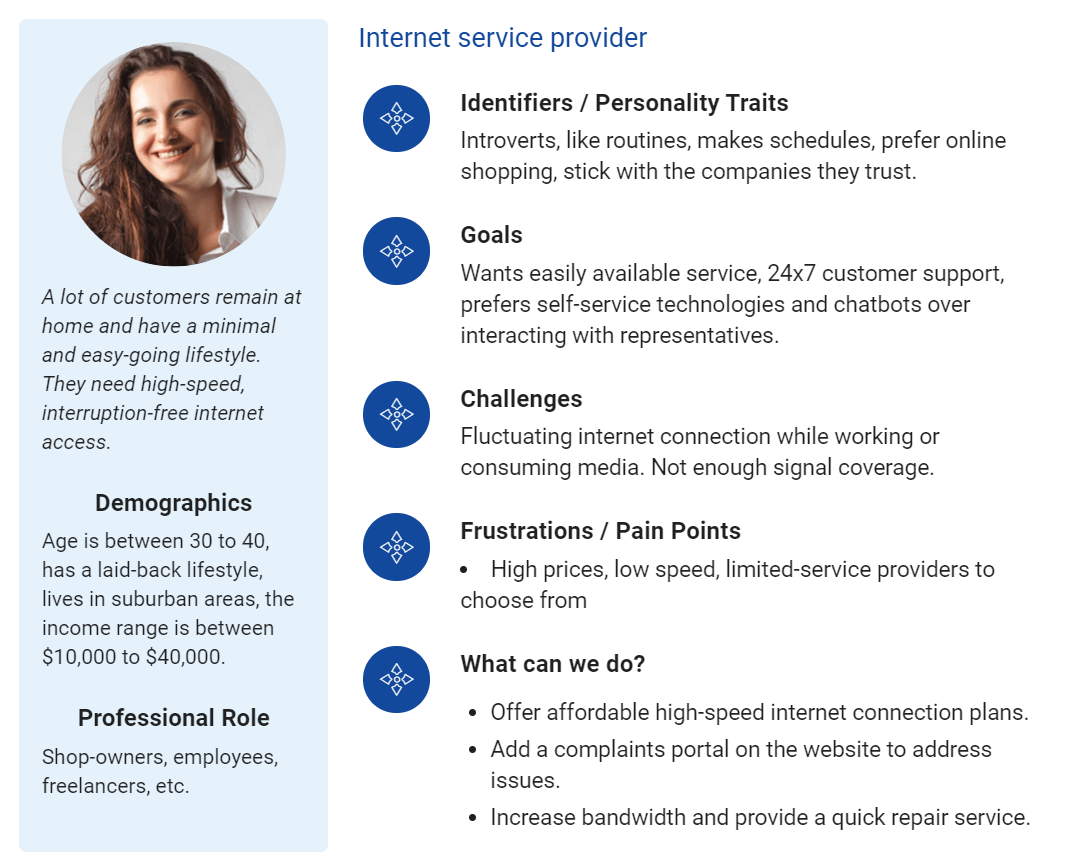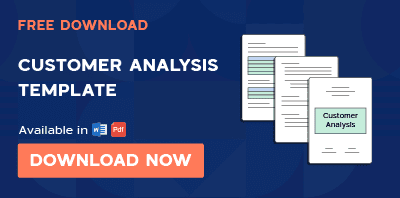A customer contributes significantly to building a winning brand.
Understanding your target consumer, their needs, the problems they face, and the way they behave assists you in creating products and services that can satisfy your customer needs.
Customer analysis is a quintessential part of your business plan. Writing it accurately will help you make informed decisions for other aspects of business planning, i.e. product development and business strategies.
So let’s get started. This blog post describes the process of creating customer analysis in a business plan and guides you with a customer persona example.
Key Takeaways
- Customer analysis involves researching and understanding your target market’s demographics, behaviors, needs, and preferences.
- It includes creating customer personas, segmenting the market, and analyzing customer needs to tailor products or services effectively.
- A thorough customer analysis helps in developing targeted marketing strategies and improving customer satisfaction.
What is customer analysis?
Customer analysis is an important section of your business plan offering a comprehensive and in-depth understanding of your potential customer. It is a study of their behavioral, psychological, and demographic patterns to help you make sound business decisions.
Such analysis assists in developing products and services addressing the pain points of your customers and in determining your pricing, marketing, and customer retention strategies.
Why conduct a customer analysis?
A thorough and insightful customer analysis offers a plentitude of benefits. Here are a few you should know of:
- Helps optimize product development by offering insights into customer behavior, needs, and pain points.
- Helps gain a competitive advantage by identifying the pain points that are unaddressed by competitors.
- Helps tailor your marketing efforts to cater to specific customer segments.
- Increases customer retention by giving you a thorough insight into what the customer needs and what drives their decision.
If you think of it, customer analysis forms the basis for designing your products and services, devising your marketing and sales strategies, determining your pricing point, and driving your business growth.
How to write a customer analysis section
Writing a customer analysis includes extensive research and collecting data from various sources. This data consists of qualitative and quantitative aspects which help you write an accurate customer analysis for your business plan.
Let’s now understand a step-by-step process to write your customer analysis.

1. Identify your customers
The first step of customer analysis is to identify your potential customers and collect information about their special characteristics. Such information comes in handy when you want your product and marketing strategies to align with your customers’ needs.
However, what details should you collect and how should you segment it? Well, segmenting in the following manner can help you get a headstart.
- Demographic: Age, gender, income
- Geographic: Location, type of area (Rural, suburban, urban)
- Psychographic: Values, interests, beliefs, personality, lifestyle, social class
- Technographic: Type of technology the buyer is using; tech-savviness
- Behavioral: Habits, frequent actions, buying patterns
- Industry (For B2B): Based on the industry a company belongs to.
- Business size (For B2B): Size of the company
Customer database can help capture the above data for existing businesses. However, for additional details, you can retort to surveys and forums.
If you are a startup, conducting an audience analysis might seem impossible as you don’t have an existing customer base. Fortunately, there are numerous ways through which you can study your potential customers.
A few of them are:
- Identifying who would benefit from your product/service
- Analyzing your competitors to understand their target customers
- Using social media to prompt potential buyers to answer questionnaires
2. Define the needs of your customers
Now that you have identified your customers, the next step is to understand and specify their needs and challenges. This is the step where you need to go hands-on with your research.
Getting to know your customers’ needs helps you determine whether or not your product or service hits the mark.
You can adopt one of these approaches to understand the needs of your customers:
Engage directly with potential Customers
A very reliable way to get to know your customers is to simply engage with them, either in person or on a call. You can reach out to your customers using one of the following ways:
- One-on-one interviews
- Focus groups
- Beta testing (invite users to test your products).
These techniques can help you collect adequate data for your analysis.
However, before approaching your customers, set up a systematic survey that can get you structured data for analysis. To ensure that your questionnaire isn’t just covering surface-level information but a deep interrogation of customers’ problems, use the technique of five whys.
Collect data from your customer support
Customer support is the place where you can find raw and unfiltered feedback given by your customers. Analyzing this data helps you understand the pain points of your customers.
You can further gather direct customer feedback by contacting the customers who had issues with your products. This will help you understand the pain points and gaps in your products more vividly.
Run surveys and mention statistics
Talking to your customers helps you get qualitative information that can be used to alter your product or services according to your customers. The next part is to attain quantitative information, in other words, presenting numbers to support the previous data.
Conducting surveys is one of the commonly used methods for quantifying information. You can conduct in-app surveys, post-purchase surveys, or link surveys in email and apps, etc.
You can also collect statistical data to support your conclusions from the interviews. These include stating studies related to customer choices, results from popular surveys, etc.

Want to create a Customer Persona in Easy Steps?
Generate valuable customer insights in minutes with Free Customer Persona Generator.
3. Create a customer persona
It is now time to present your collected data using a customer persona.
A customer persona represents a segment of customers with similar traits. It outlines the psychological and demographic features of your potential customer group and thereby assists you in making important strategic decisions.
Consider it as a tool that will make your data analysis process easier and more efficient.
Now, you can either use customer persona templates or an AI tool to generate your buyer’s persona. However, to get a more thorough insight check how a customer profile looks.
Customer persona example
This is a customer persona example of an internet service provider(ISP) to help you get a more practical overview.
 Use it as a reference to build your own customer profile.
Use it as a reference to build your own customer profile.
- About: A lot of customers remain at home and have a minimal and easy-going lifestyle. They need high-speed, interruption-free internet access.
- Demographics: Age is between 30 and 40, has a laid-back lifestyle, lives in suburban areas, and the income range is between $10,000 to $40,000.
- Professional role: Shop owners, employees, freelancers, etc.
- Identifiers/Personality traits: Introverts, like routines, make schedules, prefer online shopping, and stick with the companies they trust.
- Goals: Wants easily available service, and 24×7 customer support, prefers self-service technologies and chatbots over interacting with representatives.
- Challenges: Fluctuating internet connection while working or consuming media. Not enough signal coverage.
4. Explain the product alignment to the Customer’s Needs
You’ve gathered info and created customer personas. The final step is to explain how your product or service caters to the needs of your customers.
Here, you specify the solution you offer to tackle the challenges faced by your customers.
Mention the USPs of your product and its features, and clarify how they benefit the customer. Also, mention how your offerings make the customers’ lives better.
Continuing the previous example of an ISP provider, this company can show how its high-speed Internet plans cater to the needs of individual working professionals. They can focus on aspects like customizable plans, cost-effectiveness, and coverage in remote areas to attract users.
And there you have it—a guide to writing your customer analysis. Just ensure that you maintain accuracy while making assumptions and predictions to make this section useful for making further decisions.
Build a solid business foundation with customer analysis
Understanding your customers inside out assists you in making profitable decisions for your business. But remember, it is an ever-evolving and continuous process. You need to analyze your customers as often as possible to stay updated about their ever-changing needs.
After all, understanding what your customers need and what they prefer will help you devise strategies that ensure maximum customer satisfaction.
Now quickly create customer profiles for your business with Upmetrics’s AI SWOT analysis generator. However, once you do that, use this tool to streamline your entire business planning process.
